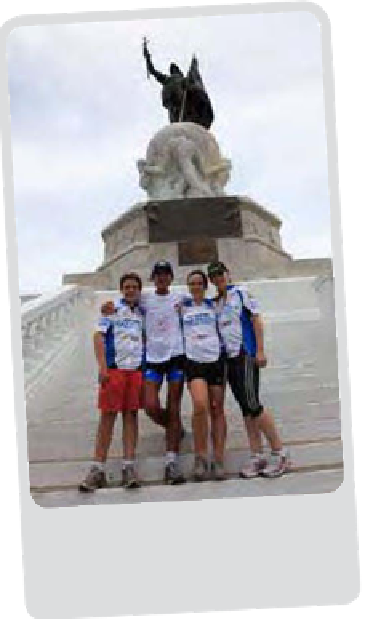Travel Reference
In-Depth Information
palm trees, gardens and water-
ways and buying the wares of
local artisans. It was a nice place
to decompress.
I ran down a thoroughfare
named Martyrs' Avenue and
asked a fellow runner what sig-
nificance it had. He told me the
story. Each January 9, Martyrs'
Day, Panamanians commemo-
rate riots that broke out in the
city on that date in 1964 over
the sovereignty of the Panama
Canal Zone. When Panama-
nian students demanded the
right to fly the Panama flag
alongside the American flag in
the zone, they were attacked
by police officers sympa-
thetic to the Americans. The
students' flag was torn in the melee, which took place in Balboa High
School, and fighting escalated all over the city. The US army was sent
in, and, after three days of pitched battles, 21 Panamanians and four
American soldiers were dead. Two monuments in the city—one on
the site of the high school and one in the forecourt of the Legislative
Assembly depicting students climbing a lamppost to raise their flag—
are testimony to the locals' defiance. In 1977, the United States ceded
control of the canal zone to Panama.
There were close to 100 people jogging beside me in Panama
City and the surrounding suburbs. A couple stopped me on the side
of the road and introduced themselves as South African Australians.
They live in Queensland and so had heard of me and my exploits, and
they run a monkey refuge in Panama, just 15 kilometres down the
road from where we were. They invited us to visit. I was keen but still
had 50 kilometres to run, so Katie and the film crew went. Katie was
thrilled: she adores monkeys, and she got to hold some, including a
two- month- old baby.
In two days' time, Bernie will be flying home to Canberra for a
s
tandi
ng un
der
the st
atue
of
Bal
boa, w
ith d
illon
, Bro
oke a
nd
r
acha
el.

